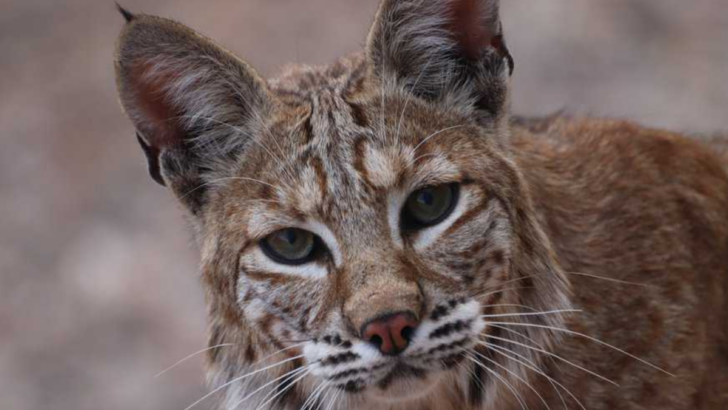If you caught yourself searching for “bobcat vs. house cat,” it’s highly possible that your heart was captured by this majestic wild feline. Don’t worry, you’re not alone. They’re incredibly hard to resist, but you should definitely find a way to do so. Although they seem friend-shaped, that’s not really the case.
If you’re one of those people who believe that cats are cats, whether they’re wild or not – I’m sorry to be the one to burst your bubble. No matter how beautiful they seem, wild felines are made to be free, and we should respect that. For their sake and our safety, as well.
Some house cats can share a lot of similarities with bobcats, which is why we’ll go into each of the differences in detail. By the end of reading this, you’ll become an expert in differentiating these two fluffs, and maybe realize just how different they really are.
1. A slight difference in size

When you think of a wild cat, your mind probably imagines a feline that is at least four times the size of your regular fur friend. However, that’s usually not the case with bobcats, which is why people often confuse them with our average felines.
Like most kitties, bobcats have a wide range of weight, with males weighing between 14 to 40lbs. Now, seeing one that’s 40 pounds, it wouldn’t be too hard to distinguish her from your average house cat.
However, considering that some cats such as Maine Coons can weigh up to 20lbs, it comes as no surprise that this isn’t really the best way to differentiate these two species. Especially when it comes to female bobcats, who usually weigh around 15 pounds. We’ve seen house cats heavier than that!
However, when we’re talking about a size difference, we’re mostly talking about height and length, which will be a lot easier to notice.
While typical house cats are about 9.5 inches, bobcats are usually 15 inches tall! On top of that, these wild felines are almost twice as long as the cuddle buddy you have at home.
So, next time you see a feline and you’re not sure whether it’s a bobcat or just a really special home fluff, focus on her length and height rather than her weight. And make sure not to compare it to larger house cat breeds such as Maine Coons – they’re special fluffs in every way possible that don’t stick to the norms.
2. House cats usually have smaller limbs
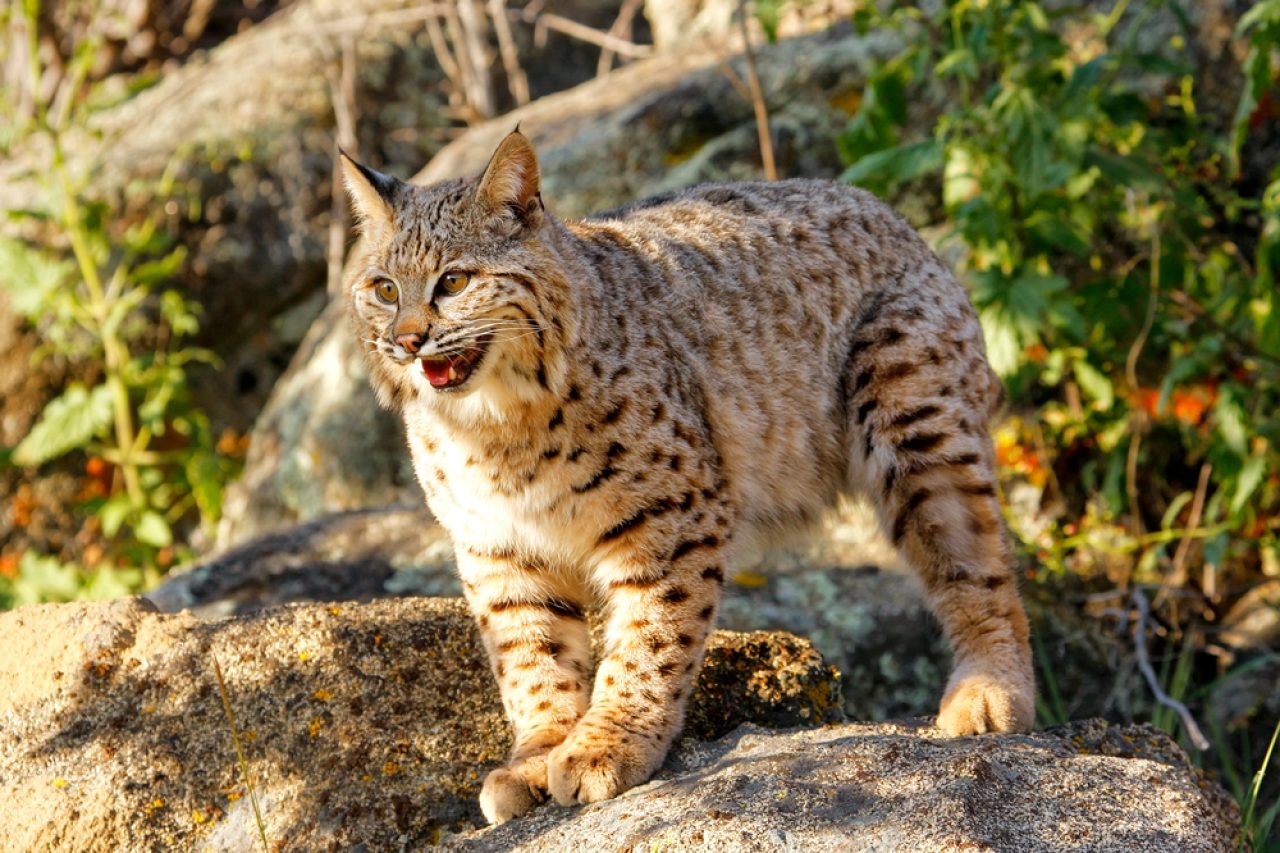
Although this is a slight difference, it’s definitely still worth mentioning. Bobcats are proud owners of long, lean legs that help them hunt and run through the woods and mountains they own. Our home friends, on the other hand, have legs perfectly made for strolling around the house and napping every chance they get.
Another cool thing about our wild friends’ limbs is that their back legs are slightly longer than the front ones. This gives them an asymmetrical appearance, but also the power to jump, swim, and hunt in almost any environment they inhabit.
When it comes to our domesticated fur friends, their legs are usually the same length. Because of this, house cats’ bodies are almost always parallel to the ground.
3. Bobcats’ beautiful spotted coats
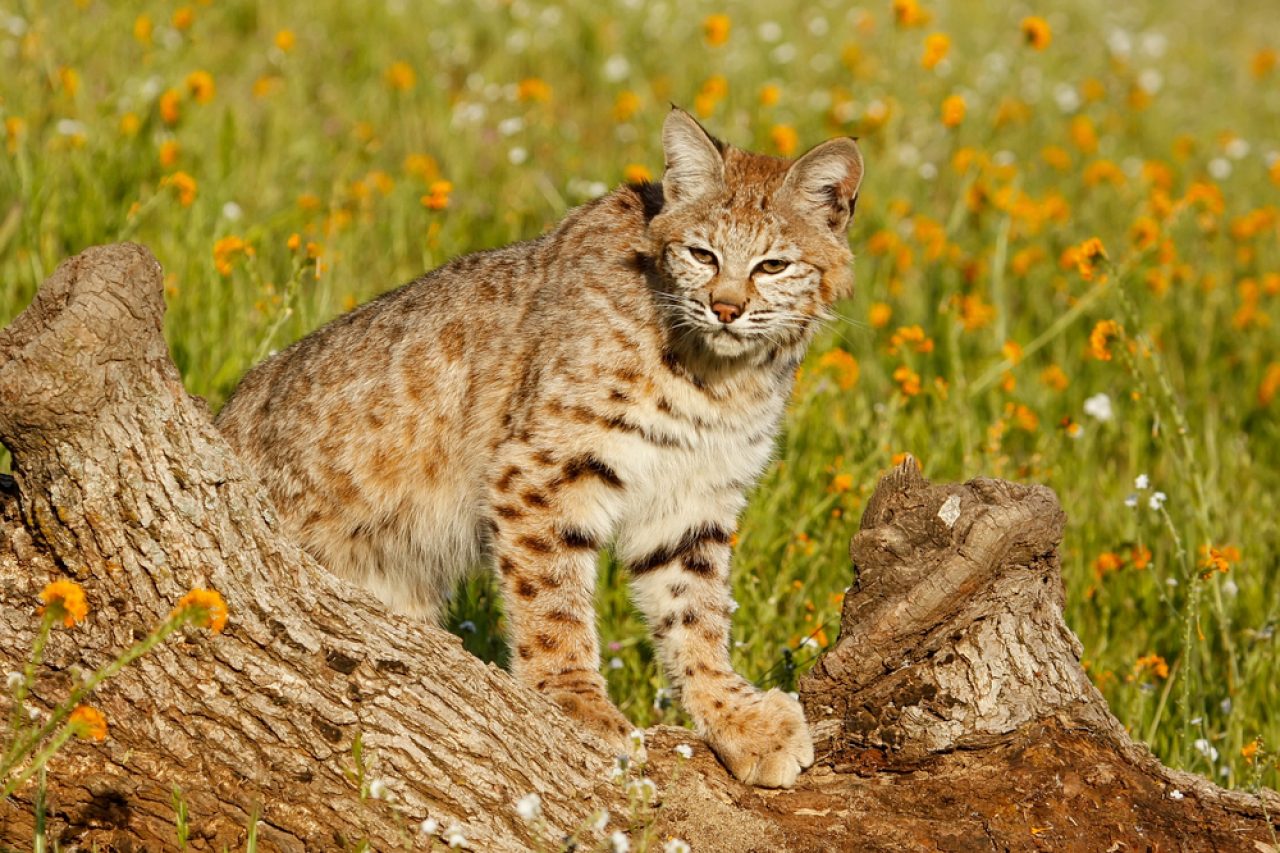
One of the bobcats’ best-known trademarks is their majestic spotted coats. In fact, most wild felines share a similar fur pattern, which helps them blend into their environment. When it comes to our wonderful house cats, however, this is pretty uncommon.
That shouldn’t be a surprise, knowing that they are considered domesticated for a reason. Their bodies aren’t really made for extreme environments or hunting sessions, although they have their wild side as well.
So, in a “bobcat vs. house cat” debate, the simplest way to tell who you are dealing with is by the fluff’s coat. Although some house feline breeds may seem like they have spots, such as Brown Tabby cats, they’re usually nothing like the ones on bobcats’ fur.
An average house cat won’t have spots on her coat, but some breeds could cause confusion, such as Bengals, Egyptians, Pixiebos, and more. All of these, however, were specifically bred to look like bobcats, and since they cost thousands of dollars, it’s highly unlikely you’ll see them running around your yard.
Another interesting thing about bobcats is the fur around their head, which makes them stand out from the rest of the feline world.
The fur pattern on the sides of their head makes them look like they have cute little manes. This ruff is mainly located around their cheeks, making it really hard not to give in and pet them.
4. Differences in their tails
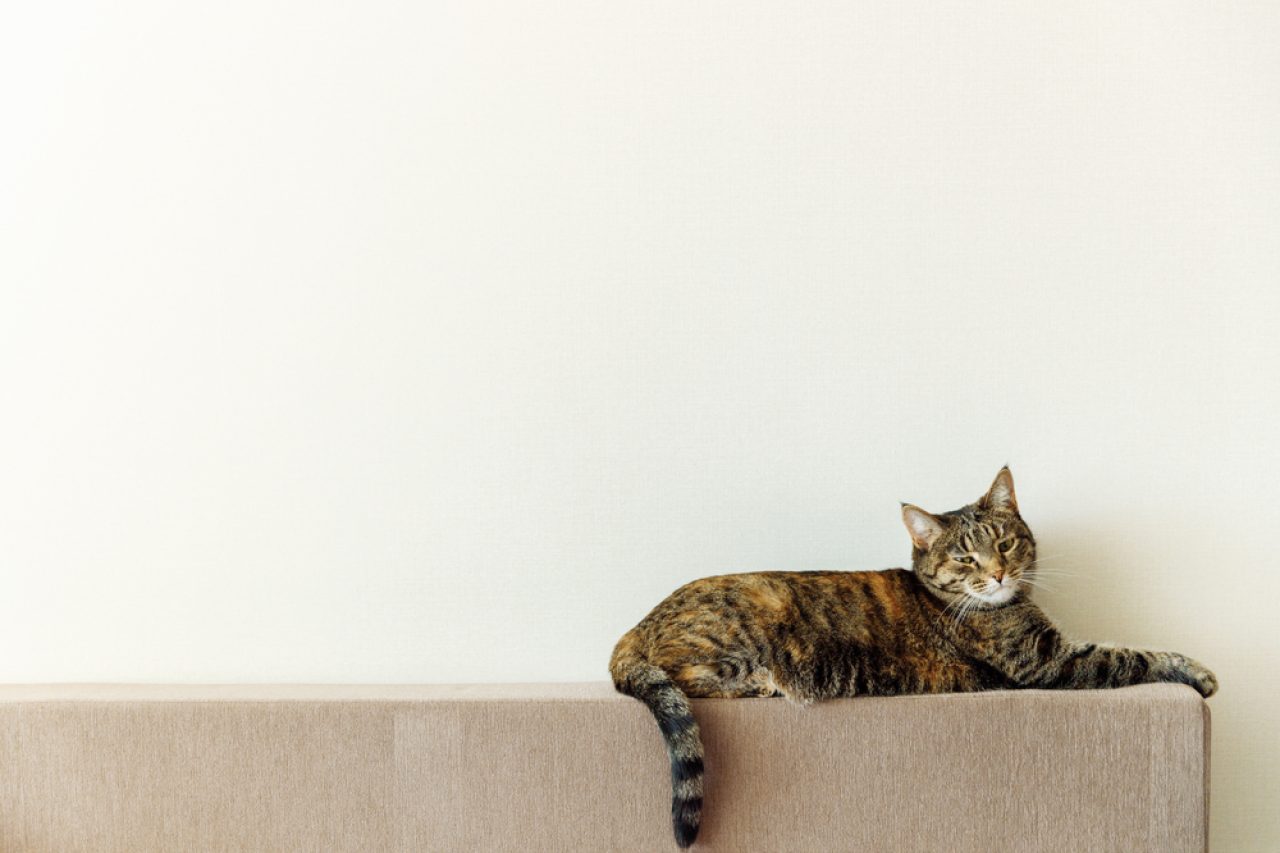
Another major difference between bobcats and house cats is in the tails. After all, this unique part of their body is how our wild feline friends got their name!
The short and “bobbed” tail is what completes the bobcat’s trademark look. Next time you see one in the wild, look for this feature just to make sure you don’t “here kitty, kitty” her way to you.
Their tail is usually around 6 inches, which is half as long as the one of an average house cat. It should be pretty easy to notice. After all, it’s one of the main things that make these wonderful felines so unique.
Besides the difference in the length of their tails, you should pay attention to the color pattern, as well. Every bobcat has a very specific tail pattern – a black top with a fluffy white bottom. This isn’t something you often see in average house cats, is it?
Our snuggle buddies at home rarely have this color pattern, even the ones that are known for having short tails such as Pixie Bobs. Okay, some black and white cats might have similar tails, but I doubt you’d mistake a tuxedo kitty for a big strong bobcat…
Knowing this difference could come in handy, especially if you’ve found a beautiful kitten that looks a bit too much like a bobcat. No matter how young, they should always have this color pattern. So, if your special kitty has a black and white short tail, say your heartbreaking goodbye – her mommy is probably close.
5. Look for the ear tufts
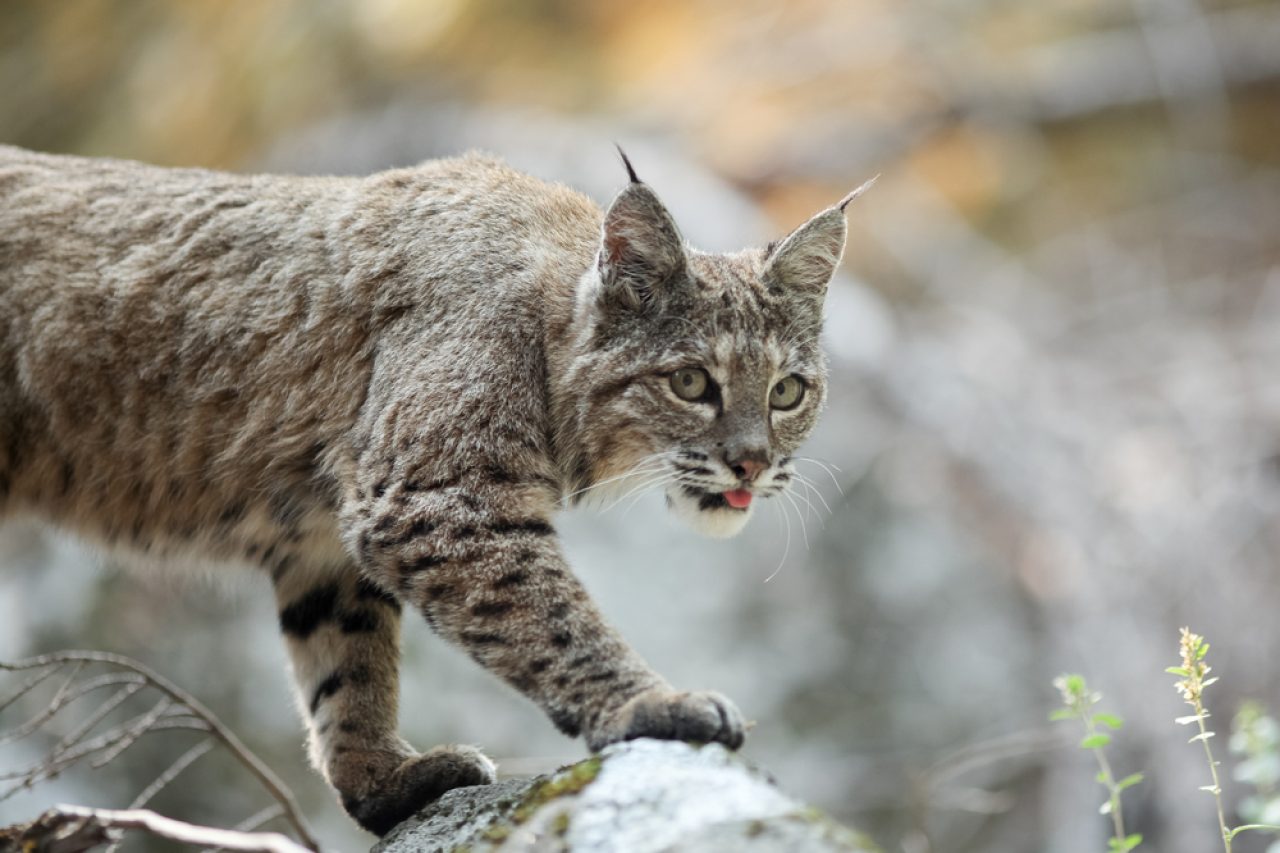
Moving on from the tail to the opposite side of our friend-shaped danger-kitty. Bobcats are known for their distinct ears, as well. On the top of them, there are pointy black tufts. However, although the hairs are always there, they’re much more subtle than you’d probably think.
In fact, some breeds that were bred to look like bobcats probably have larger tufts than their ancestors. Yes, we’re talking about Maine Coons which, again, don’t follow our “average cat” criteria.
Bobcats look a lot like their famous big cousins – the majestic lynxes. They come from the same family, so it’s no surprise that they look so much alike. Although the tufts on lynxes are much larger and more prominent, their smaller family members still have some.
Unfortunately, ear tufts won’t be enough for you to distinguish a bobcat from a house cat, especially from a long distance. However, if you somehow get close to one, knowing this could be really helpful.
6. House cats have fluffier faces
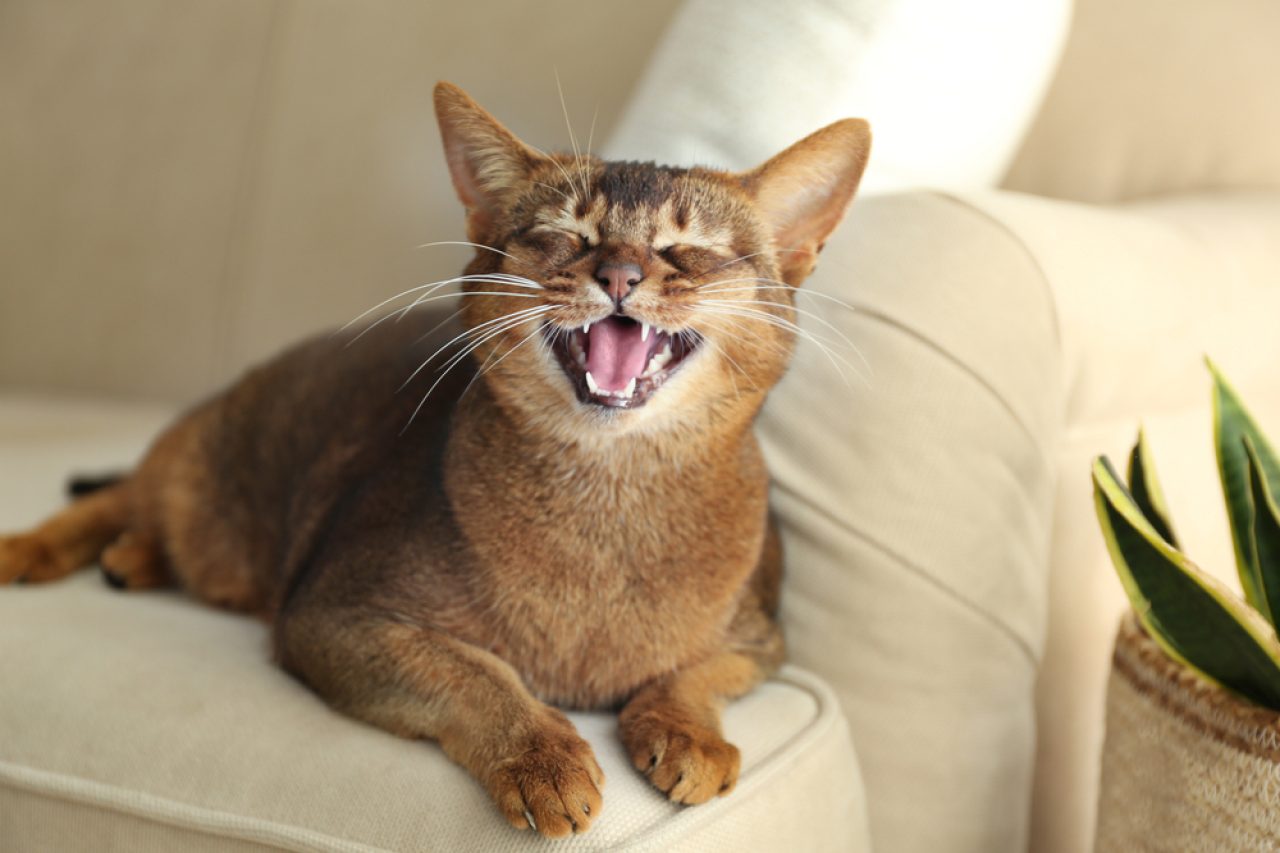
Our sweet feline companions are made to be cuddled and loved, and there’s absolutely nothing wrong with that. It’s why they make such purrfect pets, after all. How could anyone resist their fluffy heads that beg to be kissed?
In comparison to their wild cousins, house cats have much rounder and fluffier faces. Their bobcat counterparts, on the other hand, have serious faces that let you know you shouldn’t mess with them.
Although they do have ruffs (the facial fluff at the side of their face), their muzzles are much squarer than is the case with an average house cat. Their ruffs might be a bit harder to spot from the distance, but it will make their heads appear wider and much larger than in our fur friends.
Of course, there’s always an exception. This time, it’s the male house cats that haven’t been neutered. After they reach sexual maturity, their cheeks grow and they appear much chunkier than their female buddies. Sometimes, their puffy cheeks can look like bobcat’s ruffs, but mostly in long-haired kitties.
